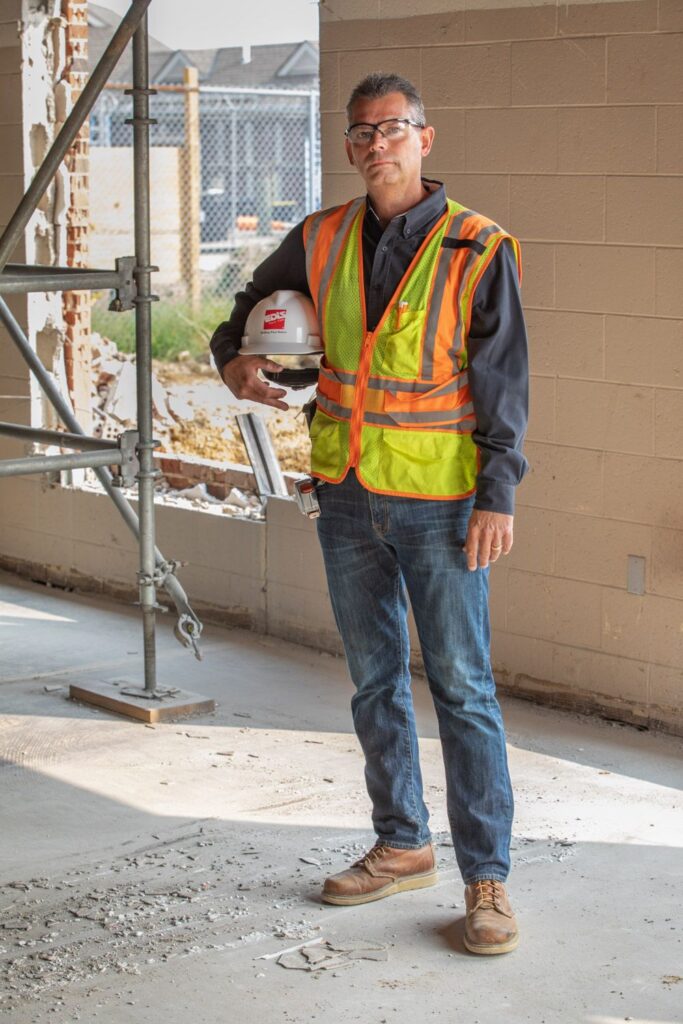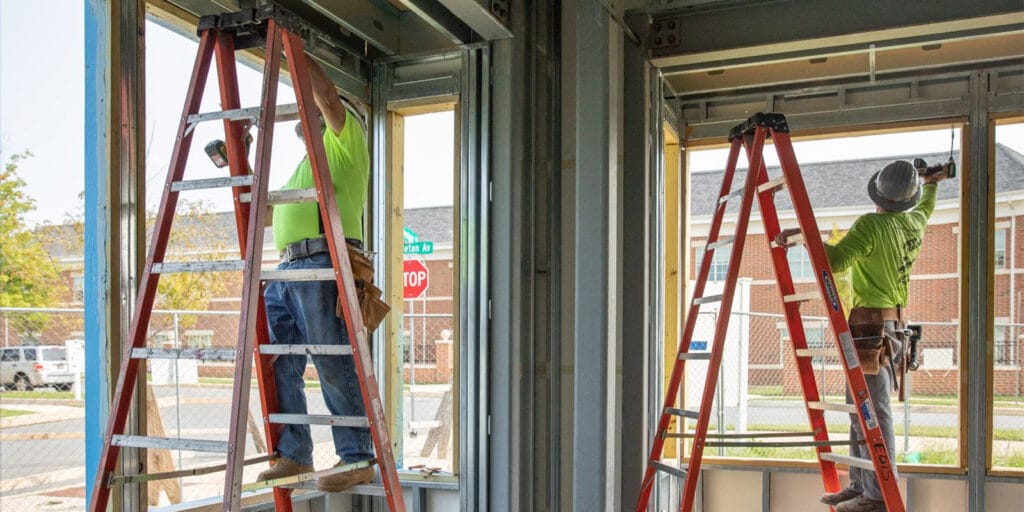Ladders are easy to use, and anyone can use a ladder, right? The answer might be more complicated than you initially thought. Firstly, different projects call for different ladder types, so figuring out which ladder best suits your project is the first thing to consider. Is this an indoor or outdoor project? How high do you need to reach? How much weight will the ladder be holding and what supports and foundations will it require? These questions may seem simple, but accidents happen, and the key to preventing potential injuries is even simpler.
Slips, trips, and falls claim lives every year. The Bureau of Labor Statistics, a unit of the United States Department of Labor, reported 8871 slips, trips, and falls resulting in worker fatality and 227,7602 slips, trips, and falls resulting in non-fatal workplace injuries in 2017. Of those statistics, about one fourth of those cases involved a slip, trip, or fall of 10 feet or less. Most home improvement projects and job site tasks that require a ladder involve heights of 10 feet or less, which underlines the necessity of understanding ladder safety. Whether it’s changing a light bulb, painting and trim work, or trimming some tall hedges, no task is too minor to be susceptible to an easily preventable accident.

The next thing one should consider when approaching a task requiring a ladder is the safety information, which is often found on the ladder itself. Reading this information is often overlooked, but shouldn’t be. It’s a ladder and all ladders are the same, right? Wrong. Different ladders have different maximum weight capacities and you do not want to be on a ladder when it collapses! Read the safety information and make sure you aren’t putting yourself or anyone else at risk. All ladders have a weight limit clearly printed on them. Typical household ladders are usually rated for a maximum weight of 200 lbs. while heavier-duty ladders can support more. Also, keep in mind that most ladders are not designed for the top two or three rungs to be stood on. Doing this can cause instability and can result in a fall, so be sure you aren’t exposing yourself to danger in order to reach a height that your ladder isn’t tall enough for.
There are a few more tips on ladder safety to consider that could mean less accidents at home or in the workplace. It is important to teach children that ladders are not toys. Make sure you supervise any children while a ladder is being used. Take into consideration the project you are undertaking and if your ladder aligns with the levels of safety required. Using an aluminum or steel ladder while working on electrical projects is a recipe for disaster, so consider everything including the material of the ladder itself. Switching off an electrical breaker takes little effort and can save your life. Foundation and support are important to consider too. A slippery or uneven floor can cause the ladder to slip or tip over—bringing you with it. Inspect your ladder for damage or disrepair before using it. Not using a broken or damaged ladder for your projects seems like an easily avoidable mishap but is often overlooked when you’re in a hurry to do something quick and easy like changing a lightbulb or hanging a bird-feeder. Finally, ask for help when you need it. Asking for help is a lot easier than taking a trip to the emergency room!




